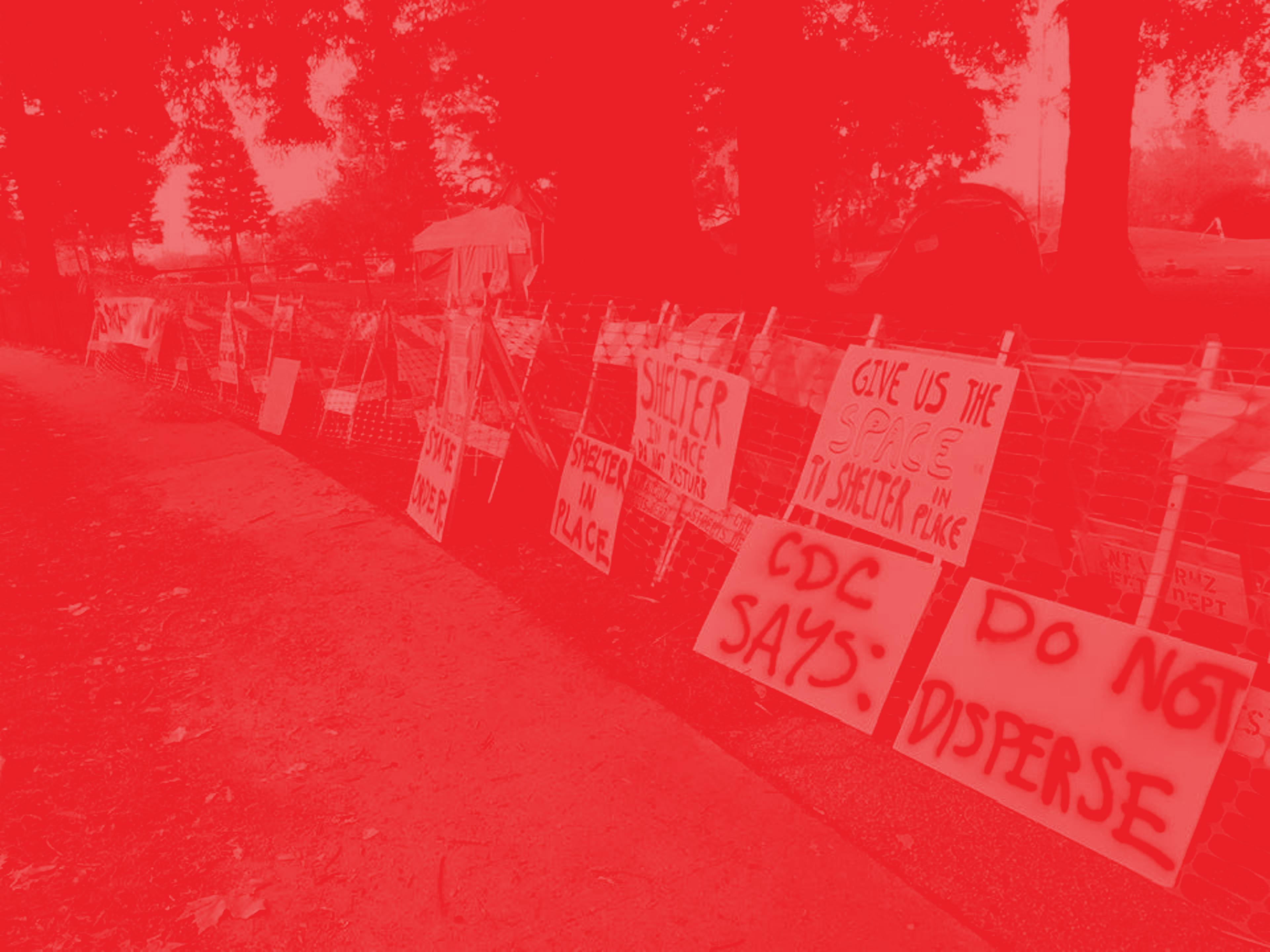
On July 2nd, Santa Cruz city staff gave a presentation to council focused on measuring and responding to the fiscal impacts of the COVID-19 pandemic on the city budget. After a few months of working alongside Management Partners, a consulting company contracted to help develop a plan, the Interim Recovery Plan was born.
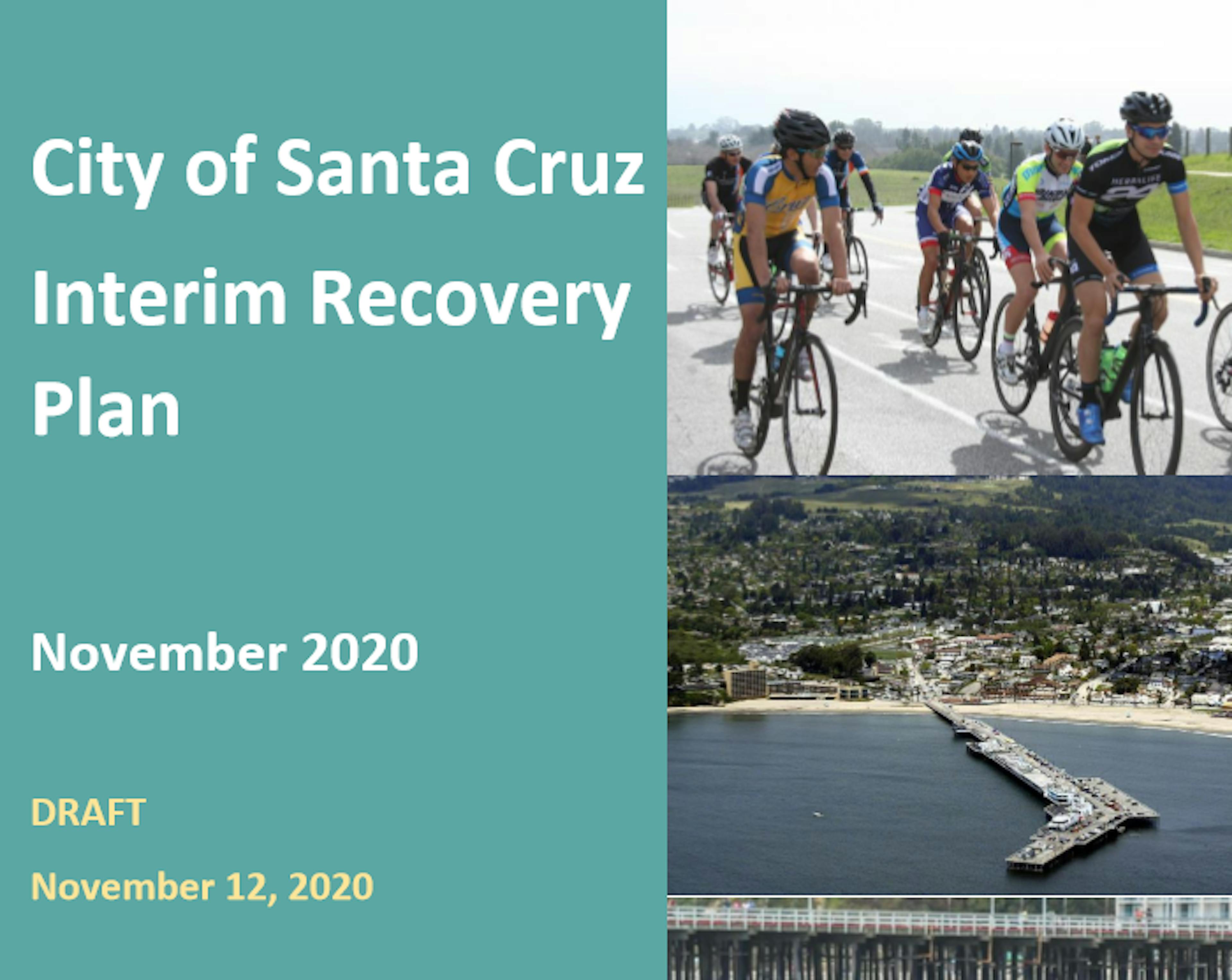
Opening up the report we are treated to an obligatory photo spread of landmarks and action shots, featuring people engaged in various forms of maskless outdoor recreation. A sort of cruel joke, considering the circumstances. As we scroll through what feels like a glossy marketing brochure and past a page “intentionally left blank”, we finally reach the overview.
Here we are told, presumably by City Manager Martin Bernal, of three key objectives, and five guiding principles.
These objectives are fairly innocuous. They suggest choosing areas of focus over the next year and a half, identifying key metrics to track the recovery, and developing a framework for prioritizing incoming work.
The five guiding principles are where things get more interesting.
These include:
- Responsiveness and Nimbleness
- Risk Awareness and Mitigation
- Creative Pursuit of All Funding
- Community Engagement
- Health in All Policies: Equity, Sustainability, Public Health
What makes these principles interesting?
The focus on both Community Engagement and Health in All Policies seems to signal an interest in responding to more than just the bureaucratic fiscal concerns of city business, specifically weaving in deeply humanitarian values: “Equity, Sustainability, [and] Public Health”.
Because the city of Santa Cruz does not have a Health & Human Services department, it is a time honored tradition for city staff to evade all questions considering the human cost of public policy whilst confidently asserting “that’s the county’s responsibility!”. But could it be that, when it comes to the Interim Recovery Plan, we are witnessing an exception to the rule?
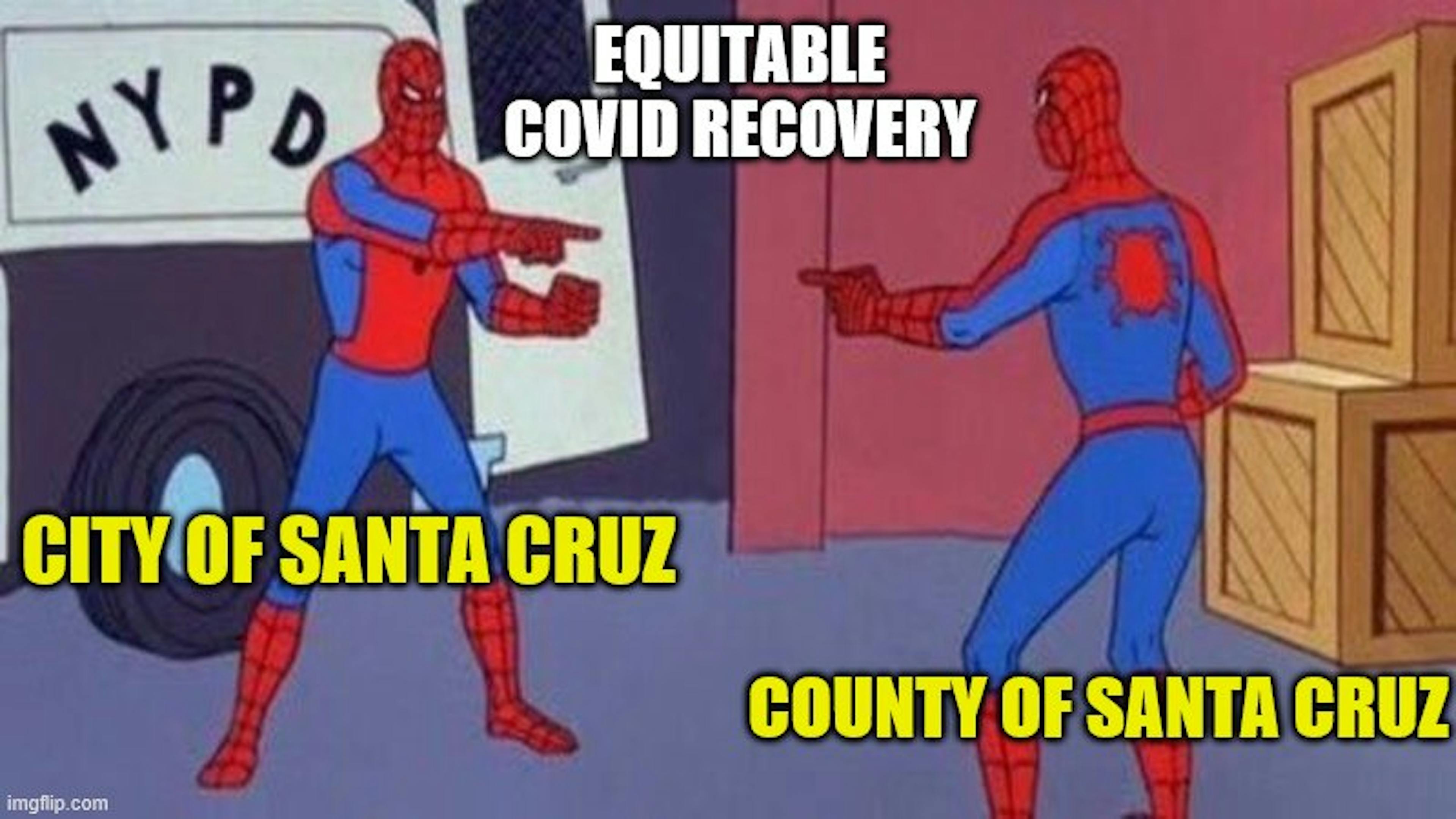
A candid shot of the 2x2 committee discussing implementation of a new homeless encampment.
On the following page we are provided with a more detailed explanation of our financial woes. We are told that the city is facing a long-term fiscal gap that averages over $10 million per year, and that our financial reserves will be depleted within a year if we do not address this deficit. Pretty serious stuff! One wonders how, under these dire circumstances, calls to defund the Santa Cruz Police Department have fallen on deaf ears given that $10 million per year is just 33% of the SCPD’s yearly budget.
Searching lower on the page for suggested budget reductions to address this rather existential deficit, we see nothing regarding cuts to the police budget at all. Instead, and in stark contrast to widespread community demand to defund the SCPD, the Interim Recovery Plan suggests we defund Park Rangers (e.g. “eliminating Ranger positions”). We probably shouldn’t be too hasty in our condemnation, however, considering that Park Rangers have been operating as an informal arm of the Santa Cruz Police since 2016. Unfortunately, the policing function of Park Rangers wasn’t what was cut here. This budget deal instead includes the SCPD hiring 5 community service officers, that will fill the same policing role Park Rangers once had, in areas like the downtown shopping district. Meanwhile, many of the functions we would normally attribute to Park Rangers will have to be scaled back.
Worse still, one of the other listed budget reductions is the “Elimination of Community Set Aside Grants”; a fund for community-based organizations to provide safety net services or related materials. When we are in the midst of a global pandemic and economic depression, and with so many in our community facing both food and housing insecurity, how does cutting funding for local safety net programs fit within the Interim Recovery Plan’s fifth guiding principle, Health in All Policies: Equity, Sustainability, Public Health? These budget reductions are literally taking food out of the mouths of city residents, via cuts to programs like Meals on Wheels.
On the next page we see “Priority Areas of Focus”, which list three high level goals:
- Take actions to ensure short- and long-term fiscal sustainability
- Invest in downtown and other business sectors
- Improve and maintain infrastructure
This section is perhaps the most sterile yet. Entirely bereft of the lofty idealism of the five guiding principles, it seems that these three priorities are focused solely on the bottom-line. And though this plan is presented as “common sense” and simply “doing what needs to be done”, the real political choices being made here are hidden from us.
It is not a given that “long term fiscal sustainability” is a priority concern during several acute and intersecting local and global crises.
It is not a given that economic recovery means funneling money from the state down to capitalists and simply hoping that positive impacts somehow “trickle down” to workers (most people).
It is not a given that the need to “improve infrastructure” is so dire that it should be focused on to the exclusion of funding safety net programs during a pandemic that disproportionately affects the poor and people of color.
...with so many in our community facing both food and housing insecurity, how does cutting funding for local safety net programs fit within the Interim Recovery Plan’s fifth guiding principle, Health in All Policies: Equity, Sustainability, Public Health?
The following page then describes 10+ metrics to be used for measuring our economic recovery. No equivocating words are used in this section. These are hard metrics describing precisely what areas of the economy are most important and, if positively impacted, should tell the story of a successful COVID recovery.
Now I ask you reader, what do you think these metrics might be?
If you thought something along the lines of:
- Employment statistics and jobs numbers
- Number of eviction notices or residential foreclosures
- Number of vacant residential housing units
- Number of people in the ICU
- Number of people with food, housing, or healthcare insecurity
You would be wrong.
The metrics we are left with, which comprise the actual underlying framework for directing how the Interim Recovery Plan will progress, are largely just measurements of capital.
They are as follows:
- Percent change in business licenses issued
- Percent change in business license renewals
- Percent change in commercial vacancy rates
- Percent change in business closures
- Percent change in number of permits issued by type (e.g., planning, building)
- Percent change in new housing units (all types) permitted
- Percent change in transient occupancy tax revenues
- Percent change in sales tax revenues
- Percent change in admissions tax revenues
- Percent change in General Fund reserves
- Percent change in General Fund capital maintenance projects budgeted
- Percent change in labor hours for maintenance of parks and open space
- Percent change in labor hours for maintenance of recreation facilities
One might be tempted to argue that these metrics are merely the easiest to measure or the most readily available to the city, but that would require us to forget the fact that city staff showed us a graph of monthly unemployment numbers in their budget presentation back in July.

This seems important to keep track of.
It also conveniently forgets that city council has arbitrarily delayed (Item 3 of the 11/4/20 city council study session agenda) a project which would have resulted in the city being able to collect data on rent increases and eviction notices. A pretty important thing to keep an eye on given that the county’s eviction moratorium is still set to end early next year.
A footnote under Principles and Processes suggests the possibility of measuring data that more explicitly tracks human costs and public health. Rather than lifting that data up into formalized metrics that guide our pandemic response, however, this new system of monitoring “well-being” will instead be compartmentalized into its own separate program:
*The City is establishing a community and well-being monitoring program to be adopted in early 2021 as part of the HiAP Year 1 implementation work plan.
Below the conclusion page, in Attachment B, is the community survey which was supposedly used to inform our three priorities of focus. It’s strange to think that the people of Santa Cruz, after having suffered so many intersecting disasters, would have voted to rain money down on the capitalist class rather than prioritize social services to help regular folks cope.
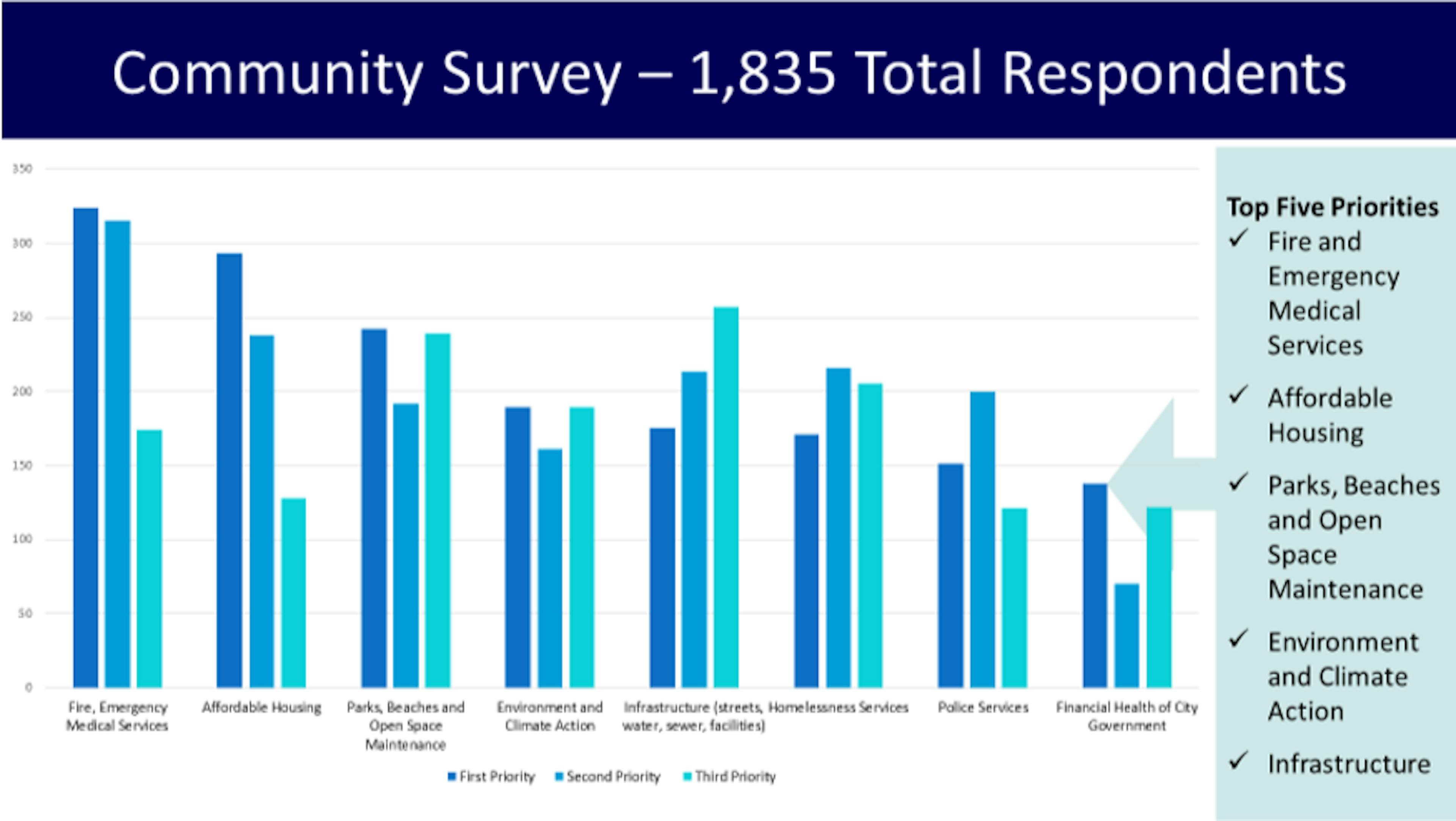
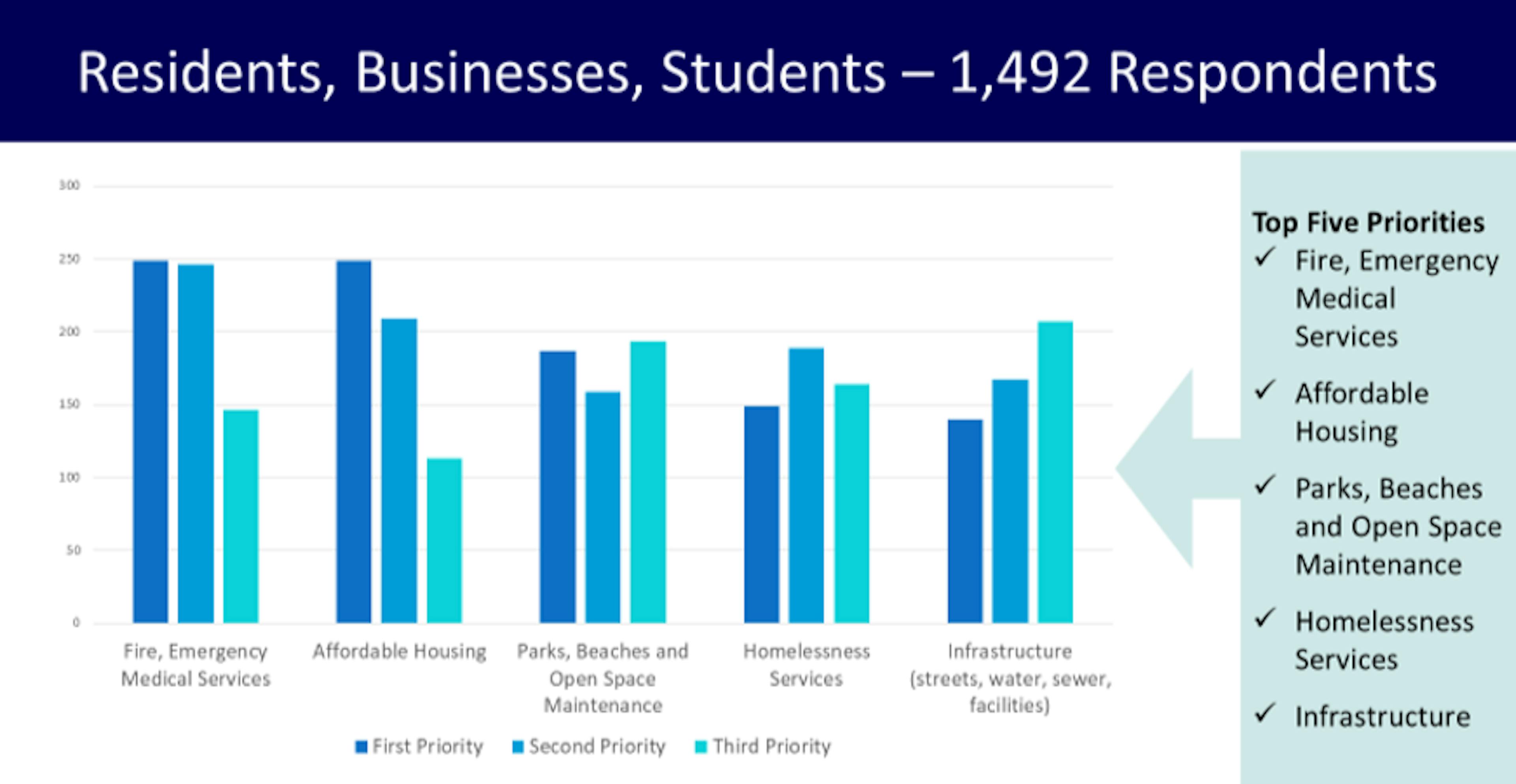
Notice that the top priorities, according to the public, are basically access to healthcare, access to housing, and maintaining the commons.
Oh. The reason it seemed strange to think people would vote for our staff-chosen set of priorities is because people didn’t vote for them.
According to both surveys, there was overwhelming consensus on the top three priorities being emergency medical services, affordable housing, and maintenance of parks, beaches, and open space; not“ensuring short and long term fiscal sustainability”, “investing in downtown businesses”, or “improving or maintaining infrastructure”.
Investing in downtown businesses was not even represented on either graph, forcing us to assume that there was no popular mandate for this priority at all.
But let’s be fair to our hardworking city staff. Now that they’ve abolished the Park Ranger program, there probably isn’t anyone left to work on the public’s third priority “maintenance of parks, beaches, and open space” anyways.
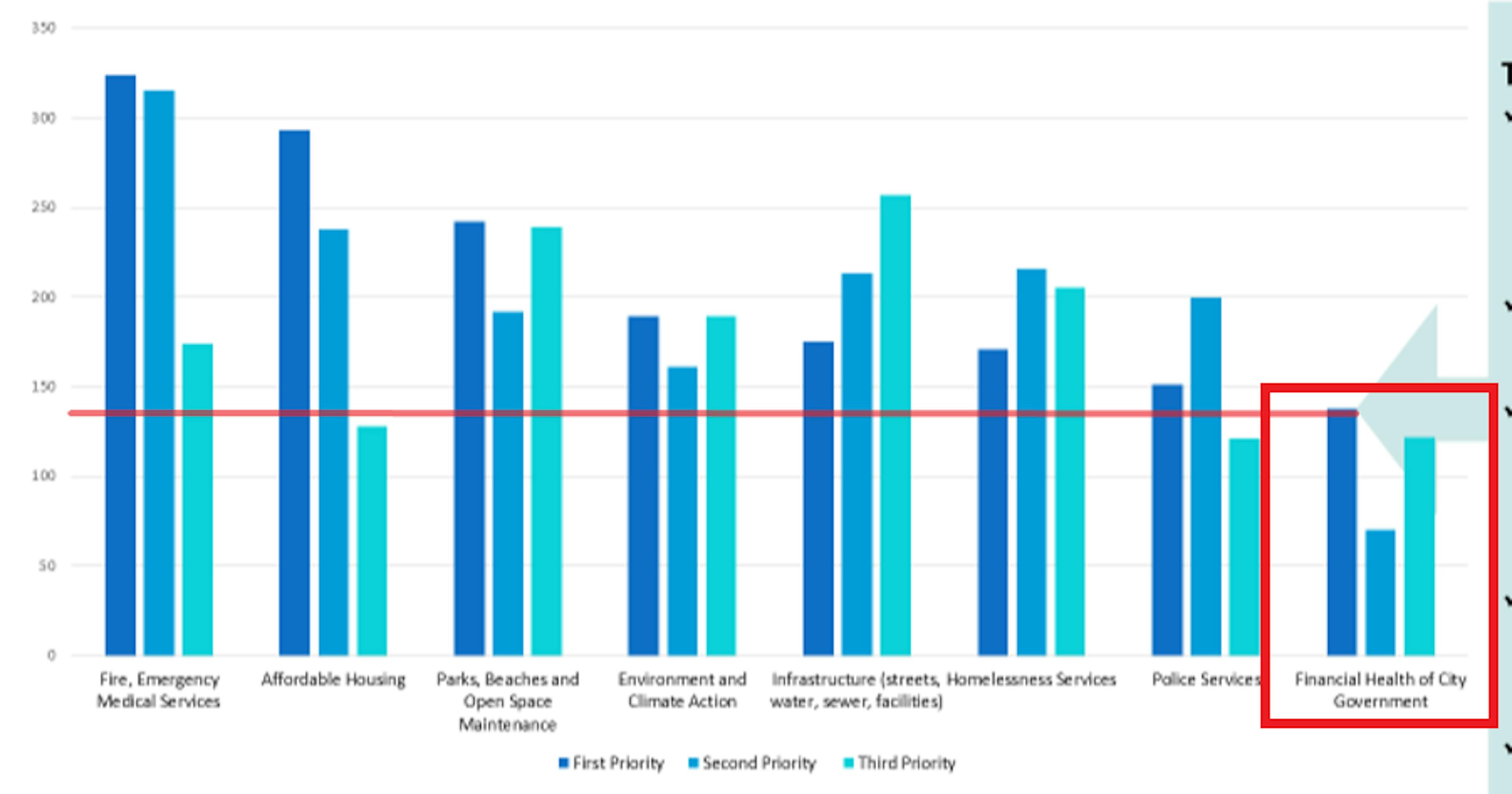
What ended up becoming city staff’s number 1 priority focus was the absolute least popular priority on this graph. It didn’t even break the top 5. Neither did police, which fell behind both Climate Action and Homelessness Services.
Public input has seemingly played no part in this report’s priorities of focus. None of our three chosen priorities are reflected in the final set, selected by city staff. Insult upon injury, we don’t even have a metric which tracks access to, or capacity of, local emergency medical services, which was the number 1 priority of the general public.
So here we are. We have an Interim Recovery Plan that is shamelessly designed against the will of the people.
- It does not prioritize what people asked for it to prioritize
- It does not measure the human cost of the pandemic for workers or renters (the majority of Santa Cruzans)
- It cuts funding to local safety net services that the most vulnerable people in our community rely on
- Meanwhile, despite calls to defund police, the police budget is actually the least fiscally impacted city department
This Interim Recovery Plan is unacceptable and must be transformed to reflect the needs of working people.
- It must be focused on investing in social services, not divesting from them
- It must center the human cost of the pandemic, not the cost to capital
- It must fund public good, and reduce harm, by reallocating funds from the SCPD
Join DSA Santa Cruz and be part of the movement to demand radical change that puts people over profit.

